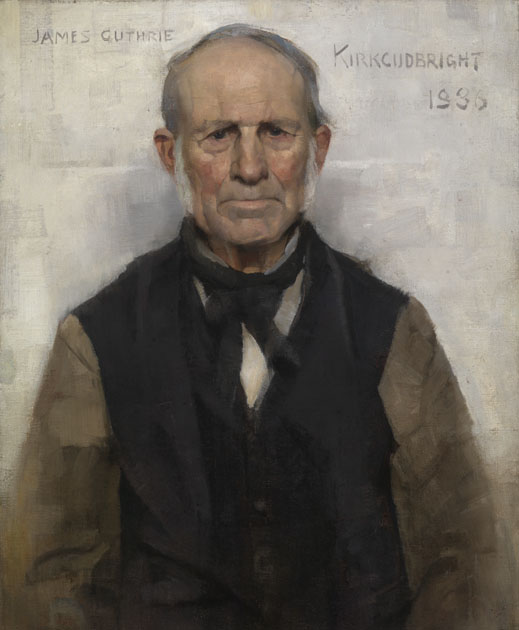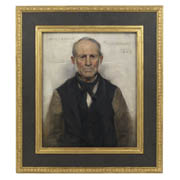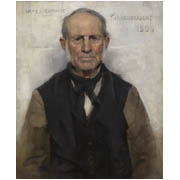Details
- Object type
painting
- Title
Old Willie - The Village Worthy
- Artist/Maker
James Guthrie artist
- Culture/School
Glasgow Boys
- Place Associated
Scotland, Dumfries & Galloway, Kirkcudbright (place made)
- Date
1886
- Materials
oil on canvas
- Dimensions
framed: 864 x 763 x 44 mm;unframed: 608 mm x 508 mm
- Description
-
Painted in Kirkcudbright, where James Guthrie and Thomas Corsan Morton had gone to join George Henry and E. A. Hornel in 1886, this simple portrait of a local personality was Guthrie’s last Naturalist masterpiece. Small in scale and modestly entitled Study when it was exhibited at the Royal Scottish Academy in Edinburgh in 1894, it represents a culmination of Guthrie’s desire to unpretentiously record contemporary rural life. The sitter here possibly appears in Henry’s The Hedgecutter (private collection) and Hornel’s Potato Planting (exh. Glasgow Institute of the Fine Arts 1887; private collection).
From 1880 Guthrie had often concentrated on single figures within a landscape setting. However, the plain whitewashed wall, against which the dignified figure of Old Willie is silhouetted, focuses attention on the worn features and direct gaze of the sitter as an individual, rather than general concept. Straightforward and unemotional, there is an honesty conveyed through the clear light, earthy tones and thick, square brushwork. It shows the continuing influence of French Naturalist Jules Bastien-Lepage whose work Guthrie had probably first seen in London in 1882 and in the Glasgow Institute of the Fine Arts in 1883.
John Morrison in 'Painting Labour in Scotland and Europe, 1850-1900' (2014) suggests Old Willie may be a vagrant, the term 'Worthy' sometimes used of tramps. This would make the painting even more remarkable as a sympathetic depiction of homelessness.
From this point Guthrie was offered an increasing number of portrait commissions.
- Credit Line/Donor
Purchased with the assistance of the National Fund for Acquisitions, 1974
- ID Number
3314
- Location
Kelvingrove Scottish Art


